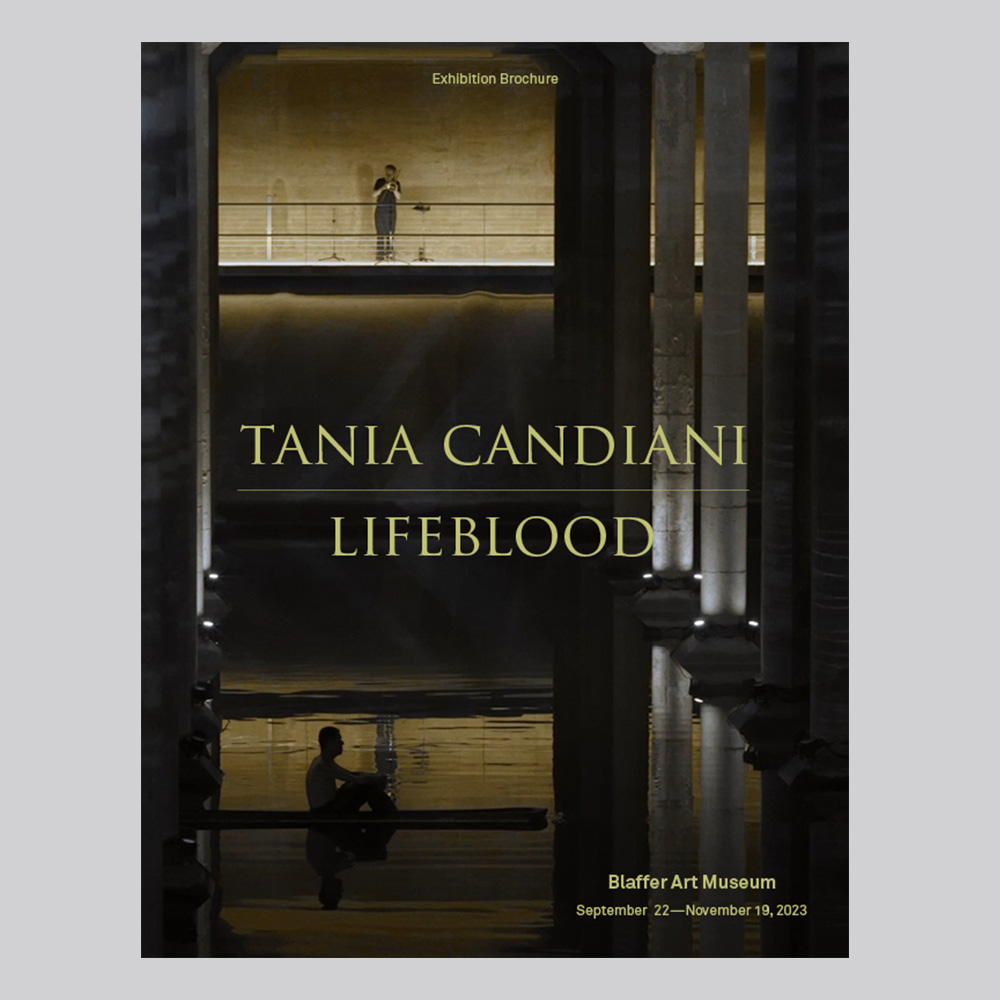
Tania Candiani: Lifeblood
September 22–November 22, 2023
A portion of this project was created in the Buffalo Bayou Park Cistern in collaboration with Buffalo Bayou Partnership.

Histories and lives embedded in the land – and particularly the waterways that have alternately built and destroyed Houston over time – will be the subject of a newly commissioned, multi-disciplinary work by Mexican artist Tania Candiani. In her past work, Candiani has worked across a spectrum of media and practices to explore the intersections between people, place, labor and industry. In so doing, Candiani initiates explorations and collaborations that convene communal meditations on the past via music, architecture, and craft, with an emphasis on early technologies and vernacular practices of record-keeping. Her work in Houston will be developed out of an intermittent eight-month residency generously sponsored and supported by the Cynthia Woods Mitchell Center for the Arts. A portion of this project was created in the Buffalo Bayou Park Cistern in collaboration with Buffalo Bayou Partnership.
We are grateful as well for the work of SubSuelo productions for their expert work in producing the video, and Input/Output for contributing important projection mapping. We also wish to thank Christian Kelleher and UH Special Collections for their assistance in lending and locating archival materials for Lifeblood.
This exhibition is dedicated to the life and memory of Vinod Hopson (1975-2023) who inspired us to think about history more thoroughly, radically, and vividly.
Exhibition Brochure
Tania Candiani: Lifeblood | Exhibition Brochure
published Blaffer Art Museum
When affirming one’s place in the present via records of the past, we would presumably desire stability and fixity. Said archives should be entrenched and unchanging, providing the proverbial foundation upon which to build both identity and legacy. This is as much the case for individuals as it is for cities, regions, and countries – and is often the reason why official histories are as guarded as they are fraught, especially for those on the margins. In this catalog of record-keeping, the environment is a provocative, if no less amorphous repository to consider as our natural surroundings bear witness to the activities of humankind.
Amongst mountains, trees, the skies above, and the land below, the water is an especially compelling sentinel, from lakes and rivers to oceans and seas. Proximity to water has often been the pre-requisite for human settlement, from ancient colonies to contemporary industry – and humanity looks habitually to liquid for life, being, and passage. Over multiple eras water has become both archetype and utility, symbol and commodity, with the unparalleled capacity to grow and nurture as well as kill and destroy. But can water, in its many forms and perpetual flux, record our history?
Exhibition Images
SOUND
This Spotify playlist, “Brazos de Dios” was developed by the late Vinod Hopson over the course of his research into the life and history of the bayous in Houston. It served as both reference and inspiration for artist Tania Candiani, and we invite you to download and listen.

